Pete’s Gear: Sound City L100 amplifiers
plus Sound City L100 posing as a Hiwatt
Pete Townshend’s use of Sound City amplifiers
Pete Townshend’s use of modified Sound City amplifiers in 1967 and 1968, and his use of Sound City amplifiers badged as Hiwatt, from late 1968 through 1969, when he began using customised Hiwatt amplifiers.
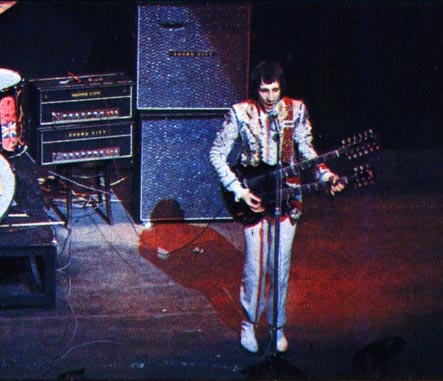
Ca. October 1967, two customised Sound City L100 amplifiers, with two different Sound City badges. Cabs are two Sound City 200w 4×12s with herringbone grillecloth. Guitar is Gibson SG EDS-1275 double-neck.
Prior to using the famed Hiwatt amplifiers, Pete Townshend used customised Sound City L100 100-watt amplifiers, starting in May 1967 and continuing to late 1968 (John Entwistle began with Sound City amps in early 1967).
These amps were customised for Pete and John by Dave Reeves of Hylight Electronics, the maker of Hiwatt amplifiers (and who originally worked at Sound City, a division of Dallas Arbiter), presumably to what would be the CP103 specification.
UK/Europe use only
The Sound City amps were used only in the UK/Europe until around July 1968. In 1967 to mid-1968, Pete used Vox Super Beatles or Sunn amps in North America. Initially the reason for the difference in gear was that the group could not afford the cost of importing their full gear and, instead, hired or borrowed gear once arriving in the U.S. Because of their financial straits, Chris Stamp, the Who’s manager, signed the group to an exclusive agreement with Vox to use their gear in the States, and later a similar agreement with Sunn.
Pete’s first use of Sound City in the U.S. was the first North American tour, February–April 1968, including the Grande Ballroom, Detroit, 9 March, the Opera House, Peoria, Illinois, 10 March, and the Fillmore East, New York, 4 April. He switched back to Sunn for the second 1968 North American tour, beginning with the Shrine Auditorium in Los Angeles on 28 June.
Pete and John would continue to use the Sunn gear in North America until 15 July 1968, when they abandoned their gear at Canadian customs in Toronto after Pete and Roger had their passports stolen in Cleveland the night before, and were unable (or unwilling) to satisfy a $20,000 customs bond. At which point Pete began regular use of Sound City gear in the U.S., with the first known date at The Dome, Virginia Beach, Virginia, 20 July 1968.
Customised Sound City L100 specs
The controls on the customised L100s were identical to the CP103 control layout. From left to right, the controls:
- Four inputs
- Volumes 1, 2, 3, 4,
- Treble
- Bass
- Master Volume
- Standby
- Mains
Early versions had various block script Sound City nameplate badges, but beginning in late 1968, the badges were removed so that some were unbadged and some featured Hiwatt nameplate badges. Plus, control panel labels were taped over to further mask the Sound City origin.
In the photos on this page, the amplifiers with chrome control panels and wide silver-faced knobs are Sound City L100 amplifiers with Hiwatt nameplates affixed.
The amplifiers with black control panels in the photos below are actual Hiwatt Custom 100 DR103 100w amplifiers, customised to the CP103 specification four-volume control layout, though no “The Who” faceplate. Pete and John began using these in August 1969.
The amplifiers with black control panels in the photos here are actual Hiwatt CP103 amplifiers, with “The Who” faceplate, which Pete began using in early 1970.
Pete continued to use the customised Sound City/Hiwatt amps through 1969.
4×12 Cabinets
With the Sound City amplifiers, Pete used various 4×12 speaker cabinets through 1968, incuding Sound City’s 200w 4×12 cabinets, as well as Marshall 4×12 1960A/1960B and/or 1982A/1982B cabinets. In mid-1968, he used Sound City’s 200w 4×12 cabinets, with some rebadged to Hiwatt by late 1968. For 1969, the rebadged Sound City cabs gave way to Hiwatt 4122 or 4123 4×12 cabinets.
The black and silver herringbone-pattern grille cloth seen on 4×12 cabinets are either Sound City or early Hiwatt SE4122s, identical to Sound City’s 200w 4×12 cabinets.
Setup signal path diagrams
Setup signal path (May 1967 – UK/Europe only) (presumed)
Guitar > Marshall Supa-Fuzz > splitter cable > Grampian Reverb > Sound City/Marshall amps 1 & 2 Inputs > Marshall 4×12 1960A/1960B and/or 1982A/1982B cabinets
Setup signal path (late 1967–early 1968 – UK/Europe only) (presumed)
Guitar > Marshall Supa-Fuzz > splitter cable > Grampian Reverb > Amps 1 & 2 Inputs > Marshall 4×12 1960A/1960B and/or 1982A/1982B or Sound City 4×12 cabinets
Setup signal path (1968 – UK/Europe only) (presumed)
Guitar > Marshall Supa-Fuzz >Junction/splitter box or splitter cable > Grampian Reverb > Amps 1 & 2 Inputs > Sound City 4×12 cabinets
Setup signal path (August 1968 – UK/US) (presumed)
Guitar > Dallas Arbiter Fuzz Face > Junction/splitter Box > Amps 1 & 2 > Sound City 4×12 cabinets
Setup signal path (December 1968–1970) (presumed)
Guitar > Univox Super Fuzz or Shaftesbury Duo Fuzz > Junction/splitter box > Amps 1 & 2 Inputs > Sound City or Hiwatt 4122 or 4123 4×12 cabinets
Full detail views of a modified Sound City L100 amplifier once owned by Pete Townshend.
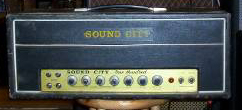
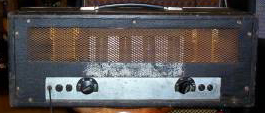
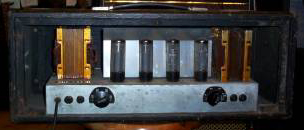
Click a thumbnail image to view larger version. Courtesy david@hylightelectronics.com:
Full detail views of a modified Sound City L100 amplifier once owned by Pete Townshend. Includes close-up of customised control panel configuration, featuring, from left to right: four inputs, Vols. 1, 2, 3, 4, Treble, Bass, Master Volume. Later sold by Alan Rogan to a Canadian band called Sheriff, who stenciled their name on the back. Then sold to a buyer in the UK who ended up selling it to MusicGround, Leeds, UK.
Photo Gallery
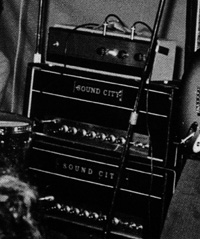
Click to view larger version. Ca. 1967, two customised Sound City L100 amplifiers, each with different blockscript Sound City nameplate badge; topped by a Grampian Reverb unit.
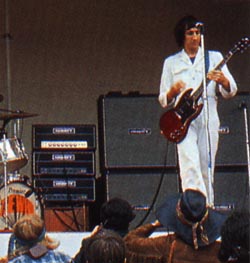
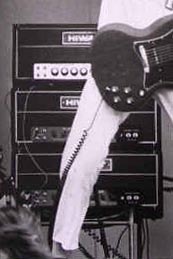
The August 1969 2nd Isle of Wight show. Above and right, top amp (chrome faceplate) is customised Sound City with Hiwatt nameplate; Bottom two amps (black faceplate) are customised Hiwatt Custom DR103 amplifiers, customised to the CP103 specification, though no “The Who” faceplate.
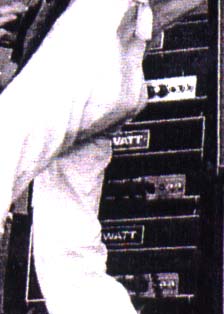
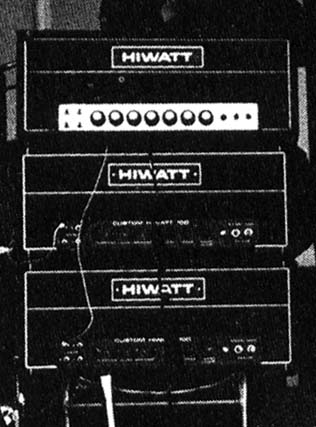
Top amp: Sound City L100; bottom two amps: customised Hiwatt DR103, customised to the CP103 specification.
Selected quotes from Pete Townshend
All quotes and references are copyright their original owners and are included for reference only.
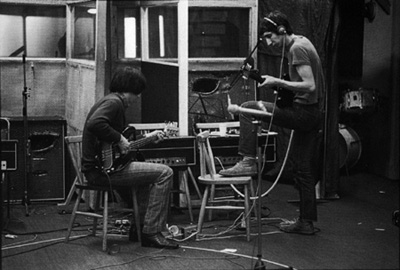
Ca. February–March 1969, recording sessions for Tommy, with both Pete and John using unbadged customised Sound City L100 amplifier heads, with Hiwatt-style chicken head knobs, with each amp driving one Sound City 4×12. Pete’s guitar is 1968 Gibson SG Special.
From August 1994 Guitarist magazine interview
“We took the whole equipment thing to America, lock stock and barrel. Coincidentally, Cream arrived with exactly the same amp rigs, as did Jimi Hendrix. Jimi and his manager Chas Chandler had previously come to see me to ask about buying amps. I said that I’d just stopped using Marshall amps at that time and was using a new rig called Sound City, which became HiWatt, and I said I thought Sound City were better. Chas, being a canny Geordie, turns to Jimi and says, One of each, I think.
We did a show with Jimi later at the Saville Theatre where he had Marshall and Sound City stacks together. So we all arrived in the States within a couple of months of each other with this formidable weaponry, used in different ways. The Who was very much a pop band, Hendrix was the psychedelic guitar artist, and Cream were Cream. I think we all helped one another, and it was like a tidal wave. The Americans couldn’t believe it. They’d had The Beatles, the Stones and The Animals, what could possibly follow that? Then we three showed up…”
Following major acts with more major acts…
“Even louder acts.”
From April 1980 issue of Sound International article, courtesy Joe G’s site.
And then I met this guy who was making amplifiers at the time for a company called Sound City. This is much later, but all I know is once I found the Hiwatt amplifier I stuck with it. I tend to choose a guitar that fits the amp rather than the other way around.
From Guitar Player, October 1967
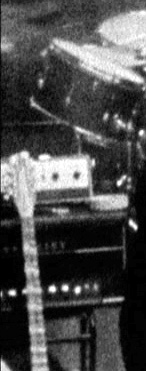
Ca. 1967, in the studio, with Sound City L100 head, topped by a Grampian Reverb unit. Guitar is 1965 or 1966 mapleglo Rickenbacker 360/12.
Excerpts from an interview with John Entwistle and Pete Townshend conducted June 18, 1967, in San Francisco, just prior to the Who’s appearance at the Monterey Pop Festival.
- GP: What is your amp volume setting on a ratio of ten?
Entwhistle [sic]: Five or six, full treble. I use two amps: full treble and full base. The cabinets are split, so the treble comes out on top of the amp. I set my guitar about two-thirds on, and then at the end I turn it full up.
Townsend [sic]: Mine’s on about five. I always have the guitar flat out; otherwise you lose top.
- GP: Do you use any special equipment?
Townsend: I use a Granpiene [sic] reverb unit for distortion; it gives a kind of clear fuzz dirge. I like a slightly broken guitar sound.
- GP: So we noticed. What about amps?
Entwhistle: Sound City, they’re an English amp. We both use sixteen twelve-inch speakers and two two-hundred watt amps. That way we get a nice even sound.
Townsend: We use Vox in the States . . . Super Beatles, four altogether.
- GP: Picks and strings?
Entwhistle: We both use Herco heavy-gauge nylon picks. And I use Roto-Sound heavy-gauge wirewound strings; they’re only available in England.
Townsend: I use regular Fender Strings.
- GP: Do you both play the same kind of guitars?
Entwhistle: I’ve a Fender Telecaster [Fender Precision Slab], one of twenty-five in existence; it’s a Precision Bass without the shavings.
Townsend: I have a Fender Stratocaster, a Telecaster, and I did have a Jazzmaster, one which I quite liked, but it got nicked . . . stolen. I’ve had a wide variety of guitars; one of the best was a Gibson Stereo; I shoved it into the amp, once, and it broke.
Guitar Player, October 1989
I never, ever used a stack with one amplifier until I got into Hiwatts, and I didn’t use Marshalls very long. In fact, I never used Marshall in the beginning at all. I used to use Fenders; I had a Fender Pro and a Fender Vibrasonic and a Fender Bassman top, and I used to drive Marshall 4×12’s with those amplifiers. I thought Marshalls were awful, and I’m afraid I still do, although that’s just a personal opinion. I don’t mean it’s bad stuff: I just mean I didn’t like the sound. And when I heard Hiwatt I was over the moon, because they sounded to me much more like a really good, top-line mid-’60s Fender amp. I still think it’s hard to beat Fender amps; they’re astonishing.
Photo Gallery
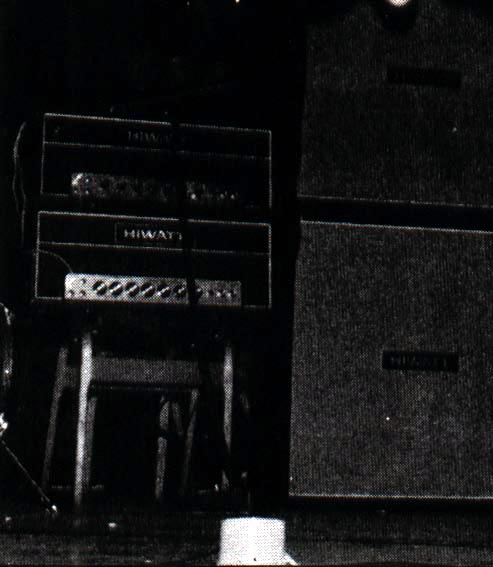
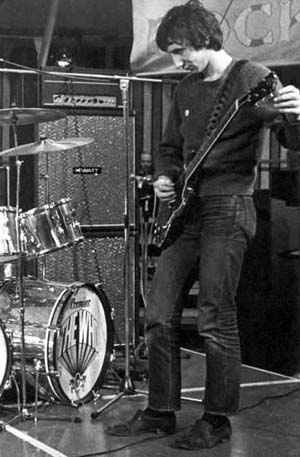
10 Dec. 1968, the Rolling Stones Rock and Roll Circus rehearsals, with unbadged Sound City L100 amplifier head, with Hiwatt-style chicken head knobs, and the two 200w 4×12 cabinets are either Sound City 4×12 cabinets with Hiwatt badges or early herringbone grillecloth Hiwatt SE4122 cabinets. Guitar is 1968 Gibson SG Special. Effects pedal is Shaftesbury Duo Fuzz.
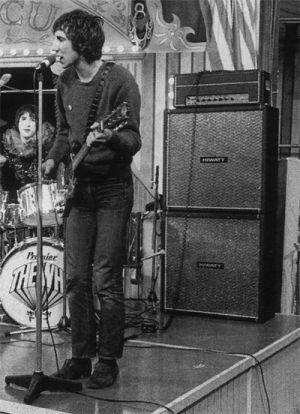
10 Dec. 1968, the Rolling Stones Rock and Roll Circus rehearsals, with unbadged Sound City L100 amplifier head, with Hiwatt-style chicken head knobs, and the two 200w 4×12 cabinets are either Sound City 4×12 cabinets with Hiwatt badges or early herringbone grillecloth Hiwatt SE4122 cabinets. Guitar is 1968 Gibson SG Special. Effects pedal is Shaftesbury Duo Fuzz.
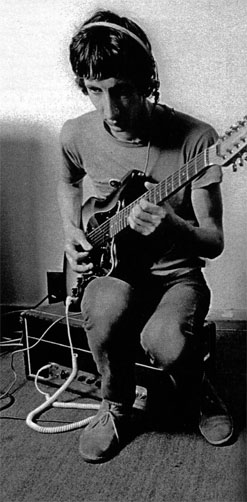
Ca. February–March 1969, recording sessions for Tommy, with unbadged customised Sound City L100 amplifier head, with Hiwatt-style chicken head knobs. Guitar is Fender Electric XII 12-string.
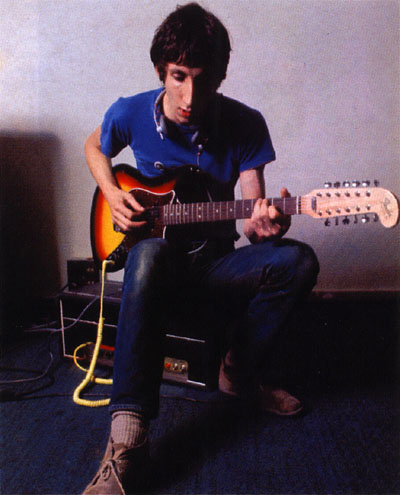
Ca. Spring 1969, recording sessions for Tommy, with unbadged customised Sound City L100 amplifier head, with Hiwatt-style chicken head knobs and control panel inscription taped over.
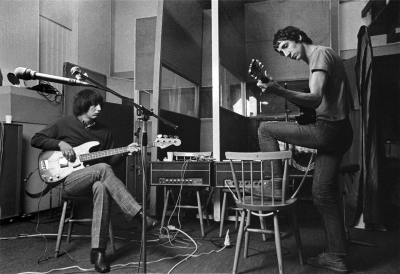
Click to view larger version. Ca. February–March 1969, recording sessions for Tommy, with Pete playing a 1968 Gibson SG Special. For amps, both Pete and John are using unbadged customised Sound City L100 amplifier heads each driving one Sound City 4×12.
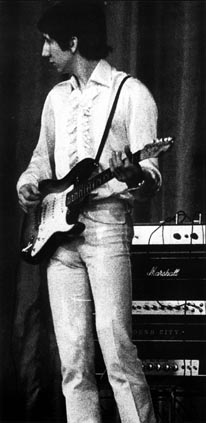
7 May 1967, Kristianstad, Sweden, Pete’s earliest known use of a Sound City L100 amplifier (bottom, with Sound City badge), along with a Marshall 1959 Super Lead, topped by a Grampian Reverb unit. Guitar is Fender Stratocaster fitted with rosewood Telecaster neck.

Click to view detail. Ca. 1967, close-up of two of John’s Sound City L100 customised control panels, showing control configuration, from left to right: four inputs, Vols. 1, 2, 3, 4, Treble, Bass, Master Volume.
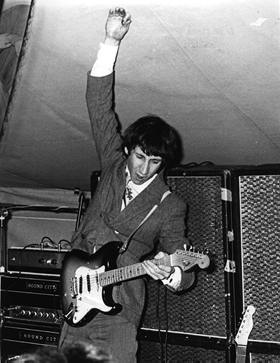
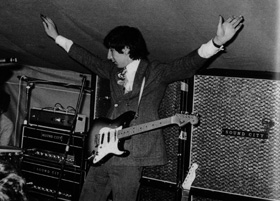
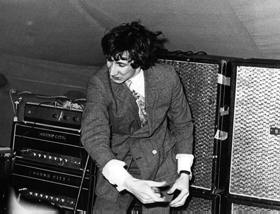
12 June 1967, multiple shots of two customised Sound City L100 amplifiers, each with different blockscript Sound City nameplate badge; topped by a Grampian Reverb unit. Speakers cabinets are four Sound City 200w 4×12 cabinets, with herringbone grille evidently held together with gaffer’s tape. Guitar is Fender Stratocaster.
First use in North America
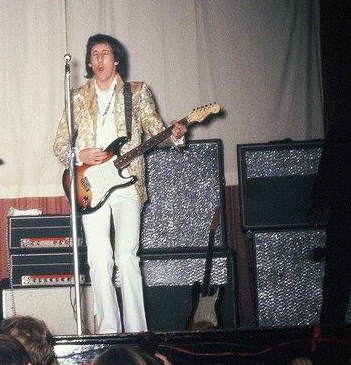
9 March 1968, Grande Ballroom, Detroit, with two Sound City amps and miscellaneous (Sound City?, Marshall?) cabs. Guitar is Fender Stratocaster. (Photo: SoundCityChris)
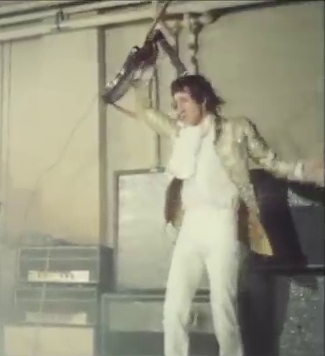
10 March 1968, Peoria Opera House, Illinois, with two Sound City amps and miscellaneous (Sound City?, Marshall?) cabs. Guitar is Fender Stratocaster.
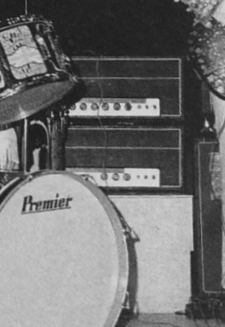
Ca. March 1968, unknown venue, with two Sound City amps and miscellaneous (Sound City?, Marshall?) cabs. Guitar is Fender Stratocaster.
July/August 1968
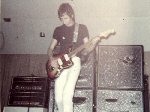
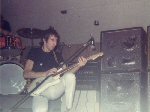
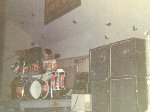
Click to view larger versions. 20 July 1968, Virginia Dome, first regular use of Sound City gear in the States. Guitars are Fender Jazzmaster (sunburst) and Fender Stratocaster (white).
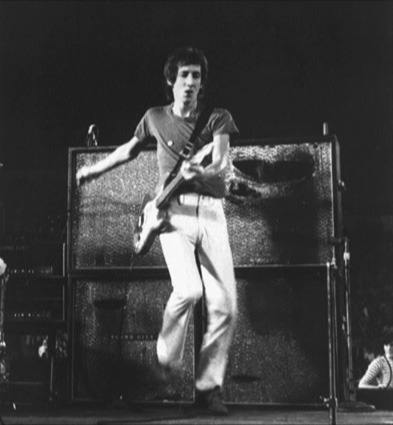
2 Aug. 1968, the Singer Bowl, New York, with two customised Sound City L100 amplifiers, with four Sound City 200w 4×12s with herringbone grillecloth. Guitar is Fender Stratocaster. Effect pedal is Dallas Arbiter Fuzz Face.
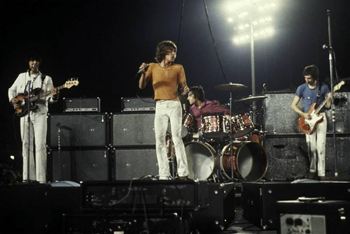
Click to view larger version. 2 Aug. 1968, at the Singer Bowl, New York, with two customised Sound City L100 amplifiers, with four Sound City 200w 4×12s with herringbone grillecloth. Guitar is Fender Stratocaster. Effect pedal is Dallas Arbiter Fuzz Face.
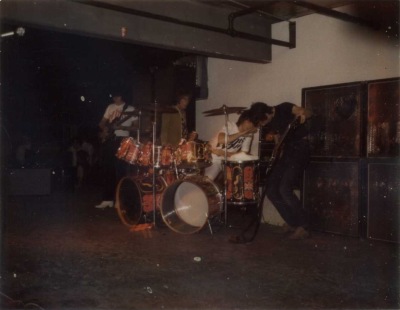
Click to view larger version. 10 August 1968, Jaguar Club, St. Charles, Ill., tuning up. Guitar is Gibson SG Special (with Vibrola intact); pedal is Dallas Arbiter Fuzz Face. (Photo: Rick Giles)
For more, see The Who at the Jaguar, 10 August 1968.
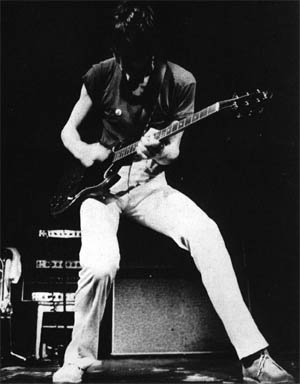
13 or 14 August 1968, Fillmore West, San Francisco, with three customised Sound City L100 amplifiers, two with the usual small round knobs, and the top unit with Hiwatt-style chicken-head knobs. Bottom amp is backup. Guitar is 1968 Gibson SG Special. Effect pedal is Dallas Arbiter Fuzz Face. Speaker cabinets are two horizontal unbadged 8×10 Marshall PA cabinets cabinets and four Sound City 200w 4×12s with herringbone grillecloth.
1969
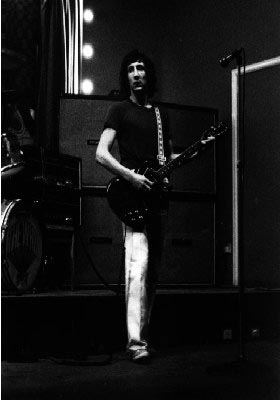
Ca. February 1969, with Gibson SG Special and Sound City/Hiwatt rig.
Resources and Information
Acknowledgements
Thanks to the following for assistance with this page:
- SoundCityChris
- The Hiwatt Story (dcsbulldog.tripod.com)
- Justin Harris (thehiwattsband.com)
For more information:
- The Hiwatt Story Online: dcsbulldog.tripod.com
- PlexiPalace Vintage Amps Forum: vintageamps.com/plexiboard/viewforum.php?f=9 (archived)
- Sound City history & info: soundcitysite.com











